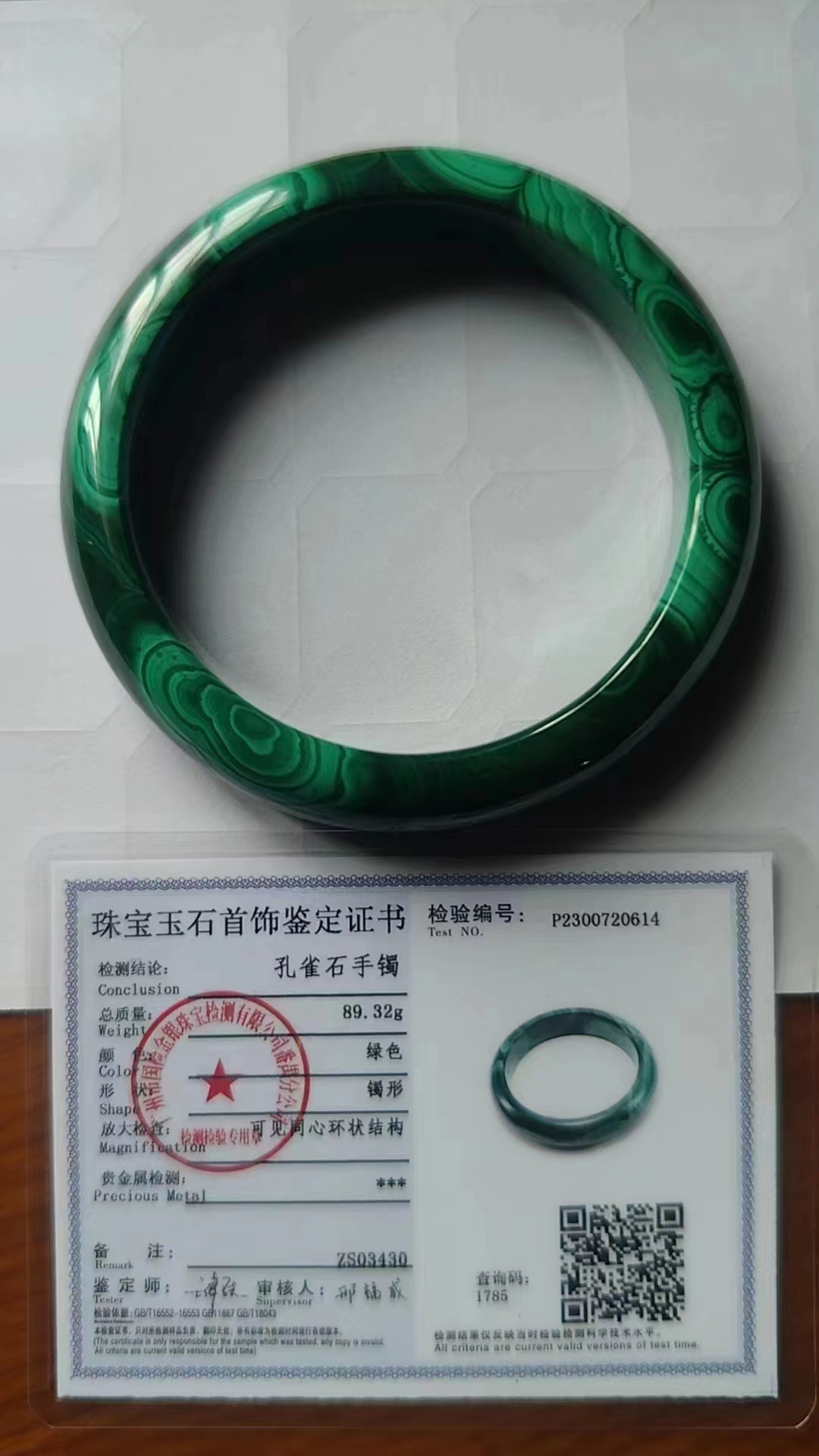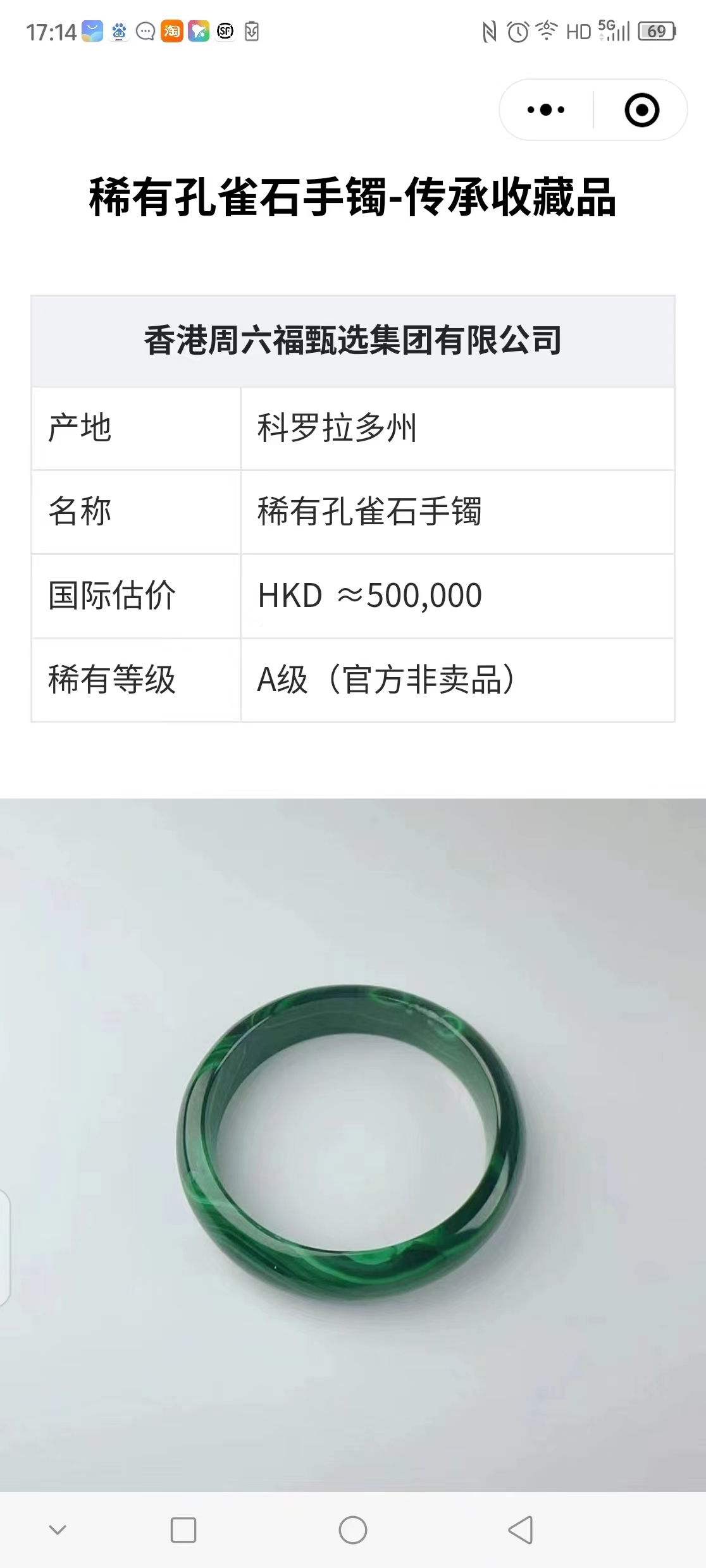孔雀石是一种古老的玉料,主要成分为碱式碳酸铜。孔雀石的英文名称为Malachite,来源于希腊语Mallache,意思是"绿色"。中国古代称孔雀石为「绿青」、「石绿」或「青琅玕」。孔雀石由于颜色酷似孔雀羽毛上斑点的绿色而获得如此美丽的名字。孔雀石产于铜的硫化物矿床氧化带,常与其它含铜矿物共生(蓝铜矿、辉铜矿、赤铜矿、自然铜等)。世界著名产地有赞比亚、澳大利亚、纳米比亚、俄罗斯、扎伊尔、美国等地区。中国主要产于广东阳春、湖北大冶和赣西北。孔雀石又被称作「蓝宝翡翠」、「翡翠蓝宝」和「蓝玉髓」。。近年来,由于我国加大了对文化产业的重视,导致艺术品的身价水涨船高,珍稀的艺术品其市场热门度,成交率都非常不错。投资艺术品也成为众多投资者的第一选择。所以无论从收藏角度还是经济价值角度来看,该件藏品都十分值得入手。
The item is marked as a peacock stone bracelet. This collection is well preserved, exquisitely crafted, and polished with top-quality malachite.
Malachite is an ancient jade material, mainly composed of basic copper carbonate. The English name of malachite is Malachite, derived from the Greek word Malache, which means "green". In ancient China, malachite was referred to as "green green", "stone green", or "blue Langgan". Peacock stone is named so beautiful due to its color resembling the green spots on peacock feathers. Malachite is produced in the oxidation zone of copper sulfide deposits, often coexisting with other copper containing minerals such as chalcopyrite, chalcopyrite, chalcopyrite, and natural copper. World famous production areas include Zambia, Australia, Namibia, Russia, Zaire, the United States, and other regions. China mainly produces in Yangchun, Guangdong, Daye, Hubei, and northwest Jiangxi. Malachite is also known as "Blue Treasure Jade", "Jade Blue Treasure", and "Blue Jade Chalcedony".. In recent years, due to China's increased emphasis on the cultural industry, the value of artworks has skyrocketed, and the market popularity and transaction rate of rare artworks are very good. Investing in art has also become the first choice for many investors. So from both a collection perspective and an economic value perspective, this collection is definitely worth buying.






